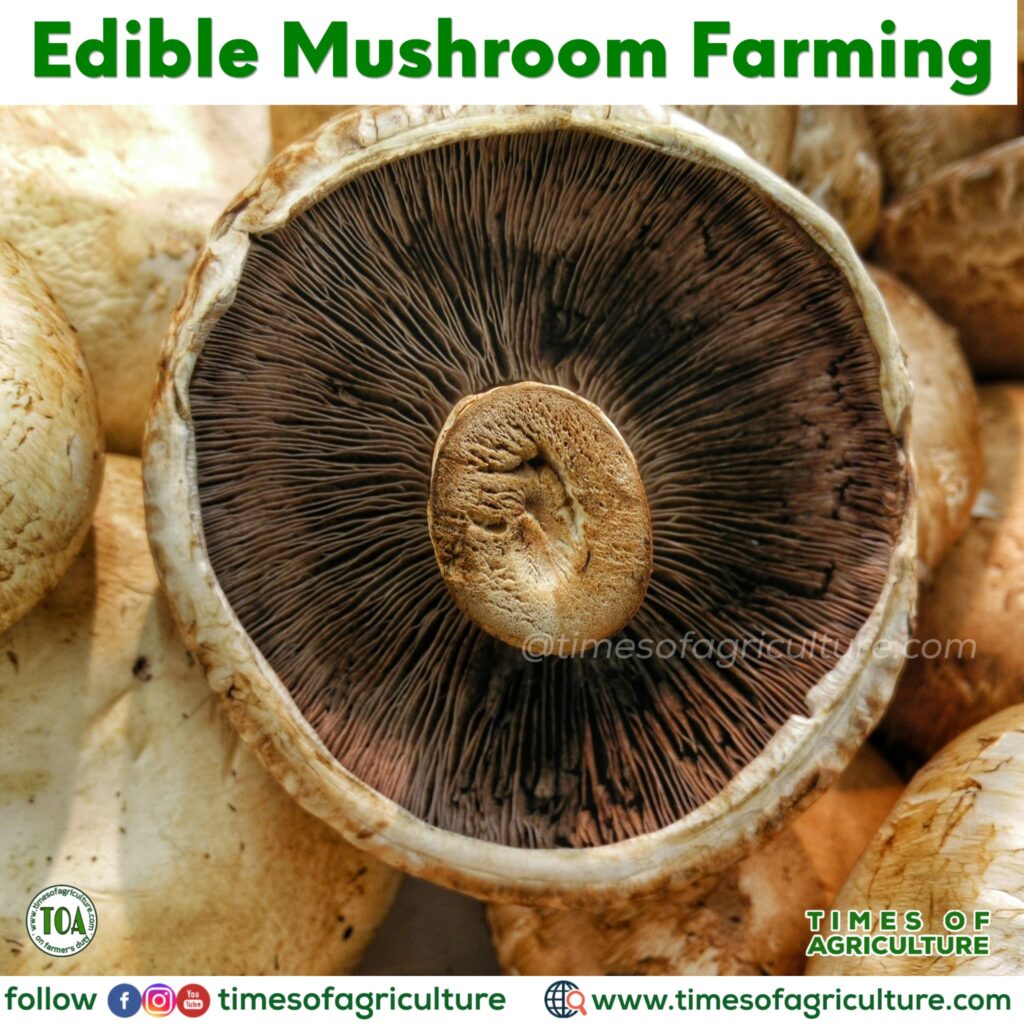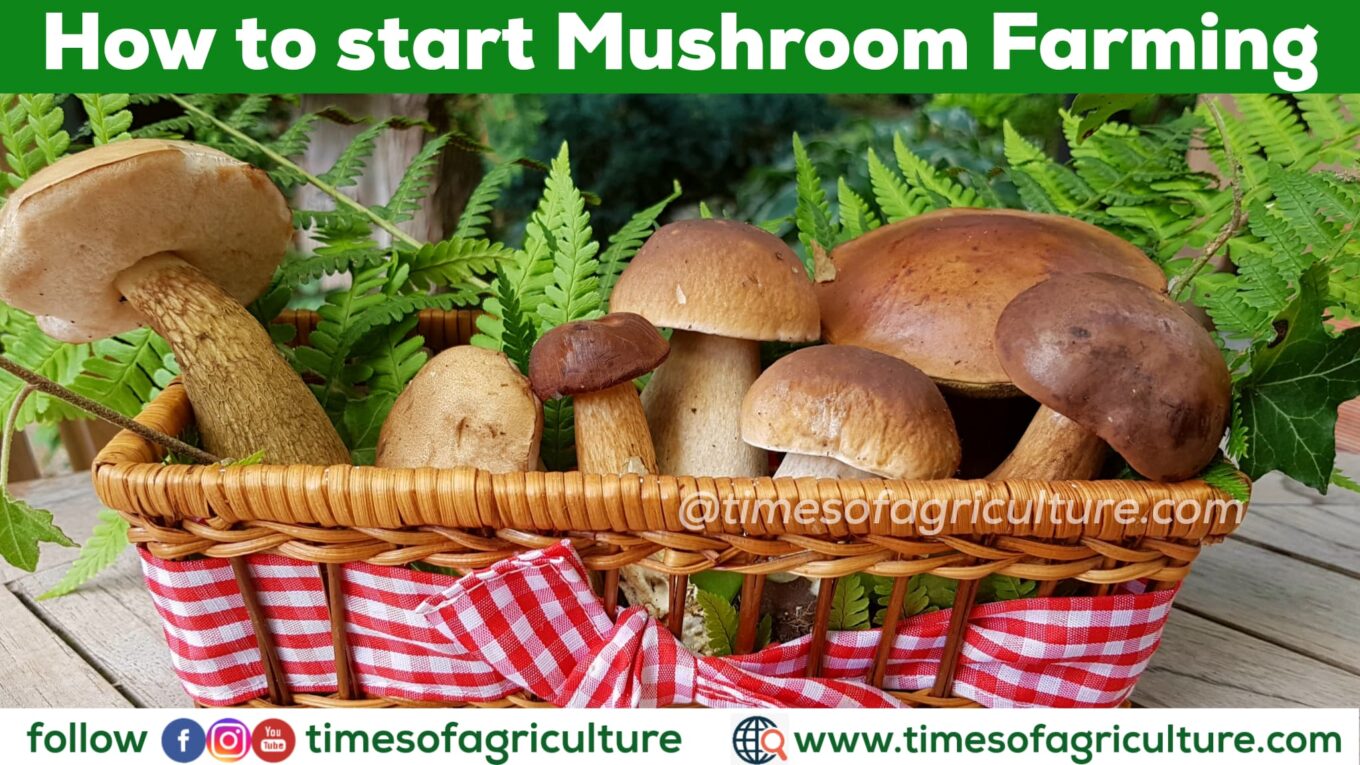How to start Mushroom Farming
In this post, we will let you know about How to set up Mushrroom unit in a 20ft X 20ft room.
Step-by-step procedure to Start Mushroom Farming
Step 1: Collection of Spawn
The mushroom farmer has to collect the Mushroom Spawn also known as Mushroom eggs from the local market. However, it is good to collect the Mushroom Spawn from the local agriculture government institution or organisation. In order to start a Mushroom unit in 20ft X 20ft room, we need at least 500 gm of Mushroom spawn.
Step 2: Preparation of substrate
We have to prepare a substrate in order to grow the mushroom. The mushroom substrate is like soil for the plant. It holds the mushrooms as well as supplies nutrients that are essential for the growth and development of the Mushroom. As a mushroom substrate, we can use either paddy straw or wheat straw packed in a polythene cover with dimensions of 45 cm height and a radius of 15 cm. Paddy straw or Wheat straw must be packed in the polythene cover only after sterilizing by boiling and drying and packing tight in the polythene cover. Boil the straw for 30 mins and then spread on a clean surface and dry and then pack in the cover.
Step 3: Adding the Spawn
Thus sterilized straw has to be packed in the polythene cover tightly. Make it tight by even sprinkling of water and press until the bag is filled tightly with the straw. Add the Mushroom spawn in 15 layers of the 20 cm height bag. Close the top of the mushroom straw bag tightly. Punch holes onto the bag evenly in order to allow the mushroom to come out from the holes.
Step 4: Incubating the Mushroom grow bags
Incubate the spawn inoculated grow bags at 24oC – 26oC in dark closed room. This step is also known as casing. On an average, incubating or casing is done for about three weeks.
Step 5: Mushroom Fruiting
Within a period of 3 to 4 weeks, the Mushroom grows from the bag. Monitor the mushroom until they attain a height of 2.5 to 4 cm. This height is enough for harvesting the Mushrooms.
Step 6: Harvesting of Mushrooms
Harvesting of Mushrooms is done when they attain a height of 4 cm. Harvesting is done by gentle twisting the mushrooms without disturbing the casing material. The gaps has to be filled again with the casing material or straw and then watering is done.
Quail Birds Farming Business in India
Pests and Diseases of Mushroom cultivation
The insect pests mostly observed are nematodes, flies (phorids, cecids, and sciarids) mites, and springtails. The mushrooms are highly susceptible to several diseases like dry bubble, wet bubble. cobweb, green mold, yellow mold, false truffle (truffle disease), olive-green mold, brown plaster mold, bacterial blotch, etc. Professional help and extension advice will have to seek by the Mushroom entrepreneur to adopt appropriate and timely control measures against pests and diseases of Mushroom.
Post-Harvest Management in Mushroom Farming
Short term Mushroom storage
Button mushrooms are highly perishable. Harvested mushrooms are cut at the bottom or baseline and should preferably be packed and marketed without washing. However, if washing is required, then mushrooms may be washed in a solution of 5 grams Potassium metabisulphite in 10 liters of water for removing the soil particles. After removing excess water and moisture content, these are further packed in perforated poly bags each containing around 250-500 g. The current trend is to market or sell unwashed mushrooms packed in plastic punnets or cups. Mushrooms can be stored at 4-5°C for a short period of 3-4 days and whenever the facility of the cold room is available mushroom should be shifted to the cold room soon after harvesting. The mushrooms are usually packed in unlabelled simple polythene or polypropylene covers for retail selling and marketing. In developed countries, two methods viz., Modified Atmosphere Packaging (MAP) and Controlled Atmosphere Packaging (CAP) are in vogue.
Long term Mushroom storage
White button mushrooms as not usually dried by common procedures used in the case of oyster, paddy, and shitake mushrooms. Canning is the widely used method of preserving the white button mushrooms and the sizeable quality of canned products are exported to international markets. Besides that, freeze-drying, IQF, and pickling are also practiced by some units.

This is all about brief information regarding steps to start Mushroom Farming and Post-harvest management in Mushroom Farming. If you have any queries, comment below.
In addition, we will also clear some of the queries of our subscribers which are answered below.
- How much does it cost to start a mushroom farm?
- It costs around Rs. 30,000 to start Mushroom unit of area 20ft X 20ft.
- How can I start mushroom farming at home?
- It is as easy as briefed above.
- How much land is required for mushroom farming?
- Mushroom farmer may require dark and closed room of minimum 200 sqft. To 20000 sqft area.
- Is it profitable to start mushroom cultivation?
- Yeah. It is highly profitable to start Mushroom cultivation.
- How to start mushroom farming in India
- It is as easy as briefed above.
- Profit in mushroom farming in India
- Profit in Mushroom farming is high. However, it depends on the marketable quantity of Mushrooms.
- mushroom farming training
- Many government agriculture organisations like MANAGE (National Institute of Agricultureal Extension Management) and NIRDPR (National Institute of Rural development and PanchayatRaj) are providing training on Mushroom farming at national level.
- investment required for mushroom farming
- Only Rs. 30,000 investment is reuired for Mushroom farming.
- How long does it take to grow a mushroom?
- It takes only 4-5 weeks to grow a mushroom.
That’s all folks. If you have any queries, comment below.
